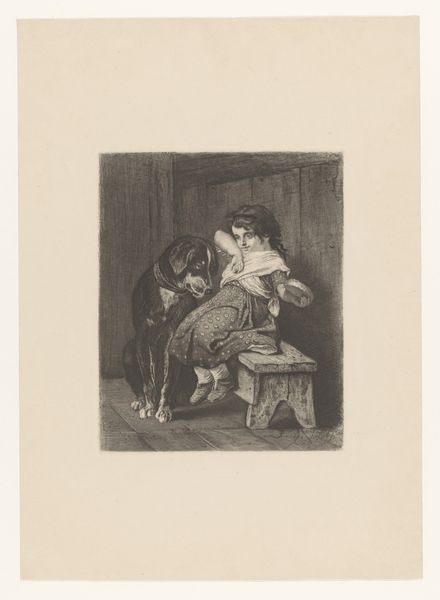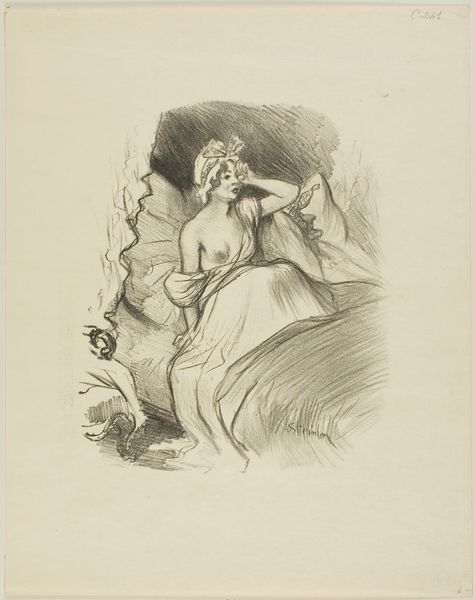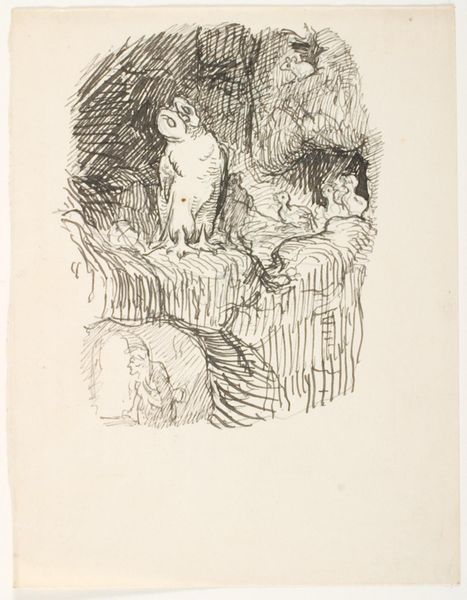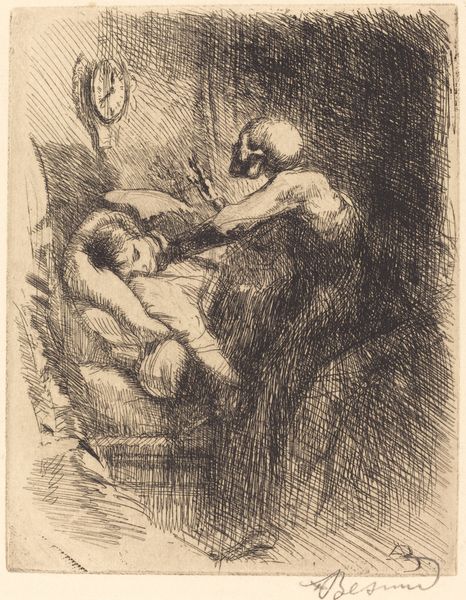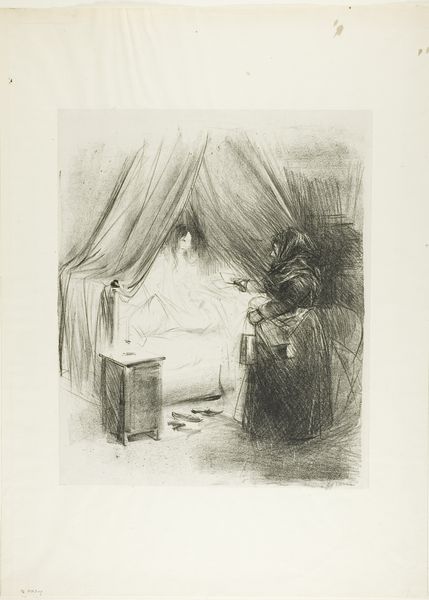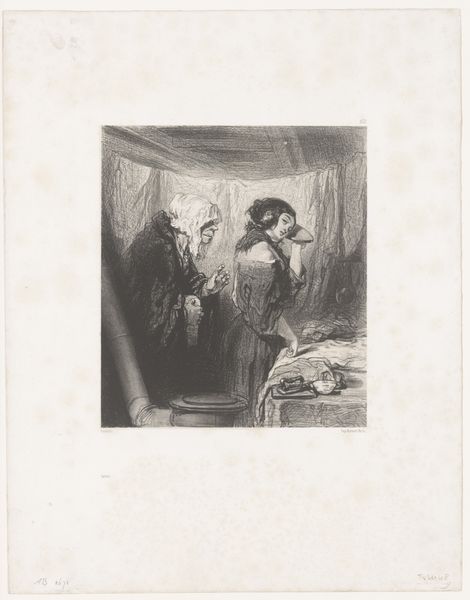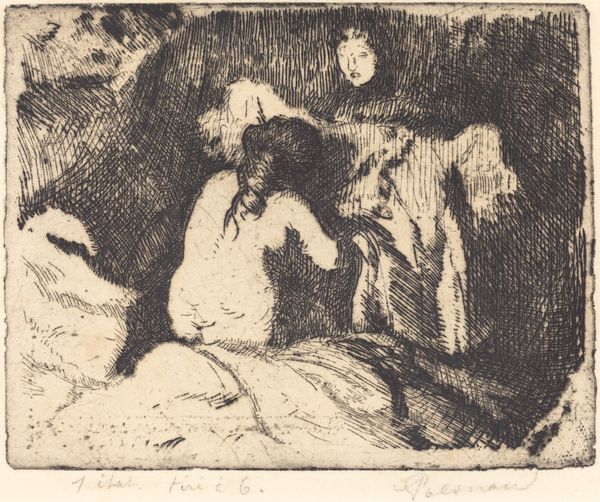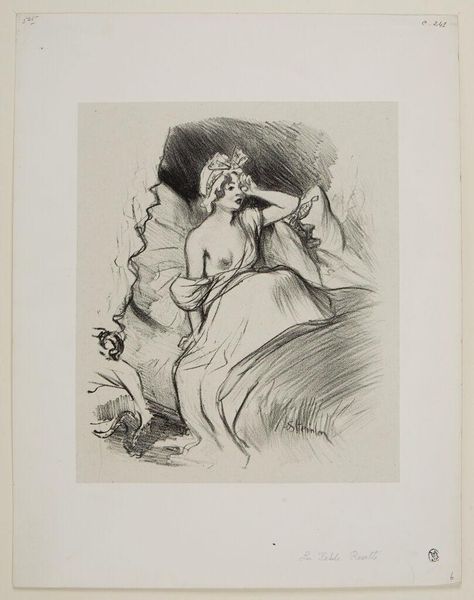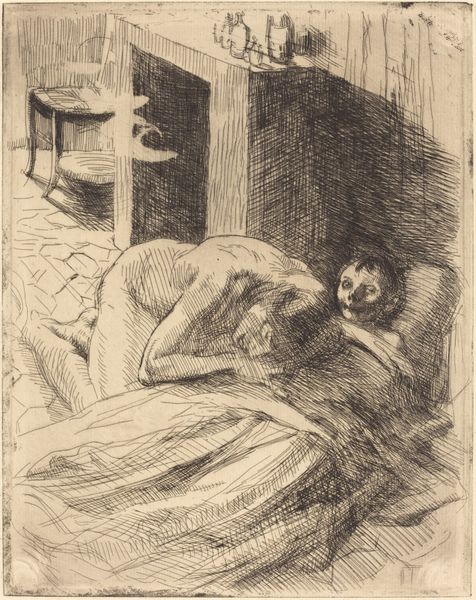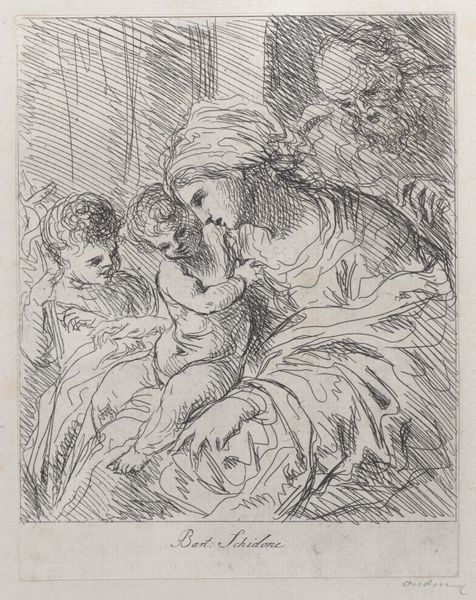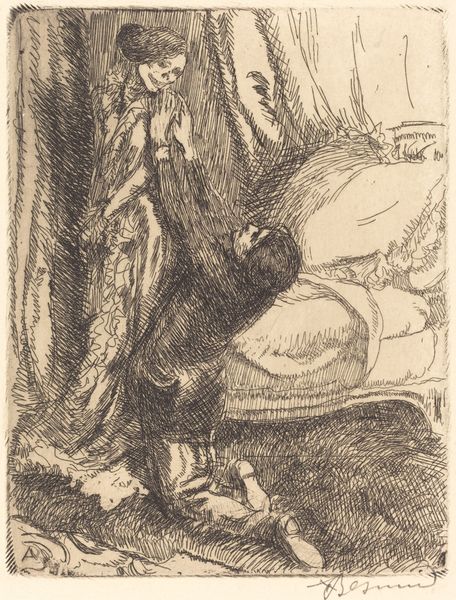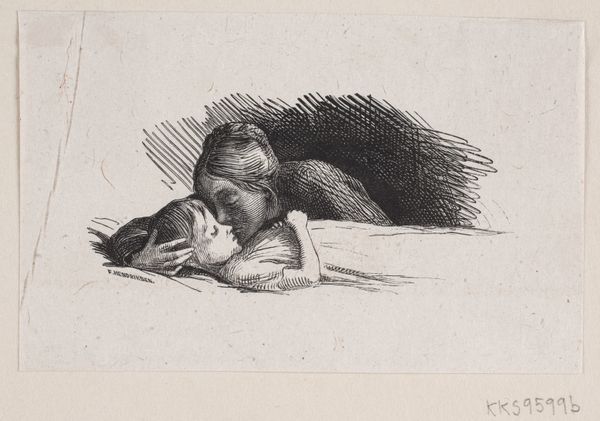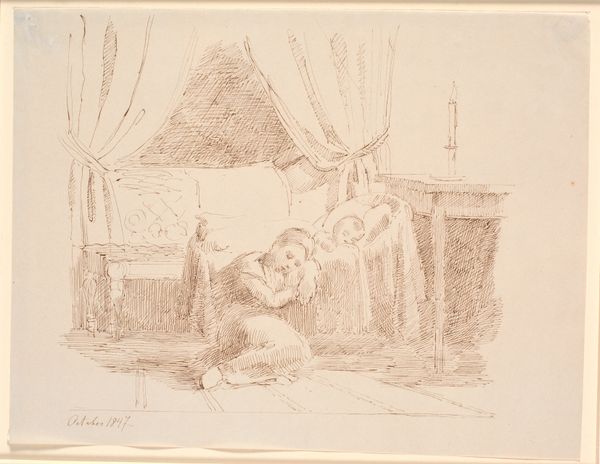
drawing, lithograph, print, paper, pencil
#
portrait
#
drawing
#
art-nouveau
#
lithograph
# print
#
paper
#
pencil
#
genre-painting
Dimensions: 240 × 180 mm (image); 351 × 276 mm (sheet)
Copyright: Public Domain
Curator: Looking at Steinlen’s 1900 lithograph “Dame Jacinthe," I’m struck by the immediate contrast between the two figures. There is something melancholic and intriguing about the interplay of characters and emotions on display. Editor: The rough-hewn lines suggest a hasty execution, yet the detail is undeniable. This piece exemplifies the accessible artistry of printmaking. Consider the cost and skill versus painting—allowing Steinlen to democratize his art for a wider audience. Curator: Precisely, and that’s key to its deeper meanings! Observe the symbols: the youthful Jacinthe, presumably in her boudoir, confronted by the older, heavily-veiled woman. It speaks of a fraught transition, perhaps from innocence to experience. This scene is heavy with symbolism that is not so explicit but palpable. Editor: The choice of lithography is also symbolic, right? How the labor mirrors that relationship—Jacinthe represents commodity—the process a kind of 'social critique' of their class structures and their interactions that reflects a keen observation about the conditions of labour? Curator: A fascinating point! Note, too, the heavy shadow, creating dramatic contrast that heightens the emotional tension and also, let's remember Steinlen's background in poster design: its mass-production meant to engage an expansive social strata. It gives "Dame Jacinthe" particular nuance. Editor: Definitely. Think of the resources required for lithography then, like, paper and specific types of pencils—it reveals insight into fin-de-siècle consumer culture. Curator: Absolutely! Plus, that’s important context when looking for broader meaning: “Dame Jacinthe,” as a product and artwork that speaks for a time that witnessed seismic economic change, shows us a snapshot of then-modern France’s society, values, class and economics. It asks how art captures that world. Editor: So, Steinlen’s image embodies production and commerce? From its materiality, that tension makes "Dame Jacinthe," well, a little gem. Curator: Precisely! And those potent symbolic implications create an enduring image that prompts discussion, even now.
Comments
No comments
Be the first to comment and join the conversation on the ultimate creative platform.
